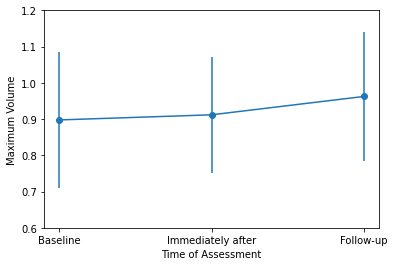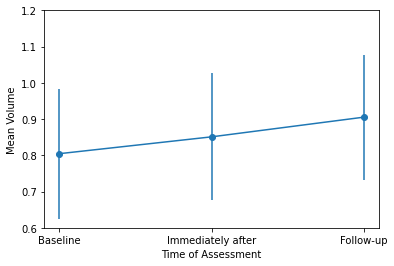Objective: The present study aimed to explore the effects of a single session of bilateral DN to the trapezius muscles trigger points on chest expansion and vital capacity which could be improve in respiratory function in people with PD.
Background: Problems in respiratory function are common in Parkinson’s disease (PD) even on early stages. One problem involving the changes in respiratory function in PD is a decrease in chest movement and thorax expansion caused by musculoskeletal problems such as rigidity or muscle tightness on muscles of neck and upper trunk, which make this population prone to a stooped posture and to decrease the air flow on lungs [1]. The relationship between these respiratory changes and pulmonary volume in people with PD can lead to the main cause of mortality, as the disease progresses [2]. Dry needling (DN) is a myofascial release technique that has been reported to provide an immediate effect on pain, decreased muscle spasm or tightness and lead to restoration of range of motion by using needles to stimulate hypersensitive and painful nodules in the musculature called trigger points (TP) [3]. However, to date, the use of this technique has not been reported to release muscle tightness in people with PD.
Method: PD participants (n = 18) were into a 30-minute DN session on trapezius, bilaterally. The maximum and mean volumes of vital capacity were assessed by using a ventilometer at pre-intervention, immediately after intervention, and one-week follow-up.
Results: A Repeated Measure Analysis of Variance (RM ANOVA) test with post hoc pairwise comparisons were used to test the differences within subjects in three moments of assessment. No interaction was found between maximum volume and assessment time points (p = 0.159) [figure1] . On the other hand, there was statistical significance for mean volumes of vital capacity values (p = 0.045)[figure2].
Conclusion: These findings can provide evidence that slight improvements in vital capacity observed after the DN single-session may be clinically relevant when referring to a progressive neurodegenerative disease. More sessions of dry needling and complementary treatment that may need to be explored and observed to get the best treatment for respiratory function in individuals with PD.
References: 1 – Santos RB, a , Fraga AS, b , Coriolano MdGWS, c , et al. Respiratory muscle strength and lung function in the stages of Parkinson’s disease. Jornal Brasileiro de Pneumologia. 2019;45(6):e20180148
2 – Baille, G.; De Jesus, A.M.; Perez, T.; Devos, D.; Dujardin, K.; Charley, C.M.; Defebvre, L.; Moreau, C. Ventilatory dysfunction in Parkinson’s disease. Journal of Parkinson’s disease 2016, 6, 463–471.
3 – Gattie, E.; Cleland, J.A.; Snodgrass, S. The effectiveness of trigger point dry needling for musculoskeletal conditions by physical therapists: a systematic review and meta-analysis. Journal of Orthopaedic & Sports Physical Therapy 2017, 47, 133–149.
To cite this abstract in AMA style:
A. Tahara, A. Gastaldi, A. Chinaglia, R. Monteiro, V. Tumas, P. Santiago. The effects of one session of dry needling on vital capacity in people with Parkinson’s Disease [abstract]. Mov Disord. 2023; 38 (suppl 1). https://www.mdsabstracts.org/abstract/the-effects-of-one-session-of-dry-needling-on-vital-capacity-in-people-with-parkinsons-disease/. Accessed January 2, 2026.« Back to 2023 International Congress
MDS Abstracts - https://www.mdsabstracts.org/abstract/the-effects-of-one-session-of-dry-needling-on-vital-capacity-in-people-with-parkinsons-disease/


